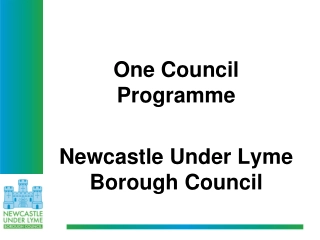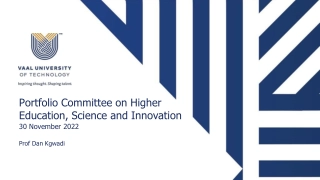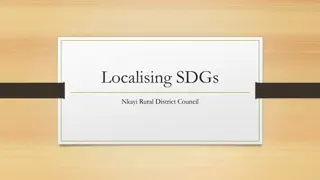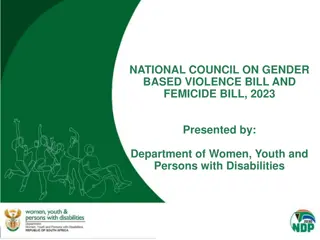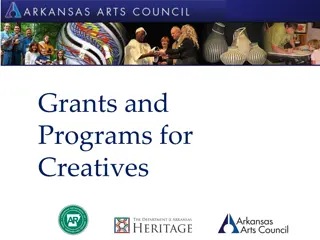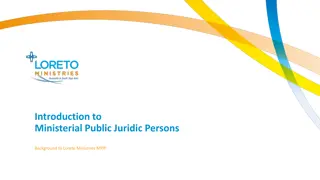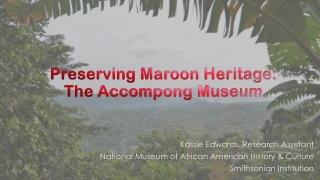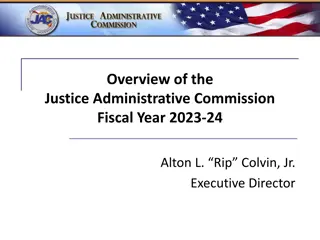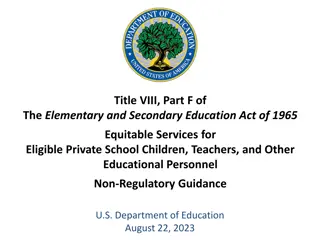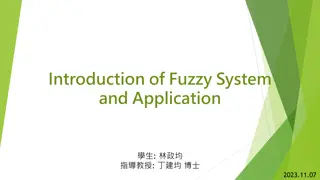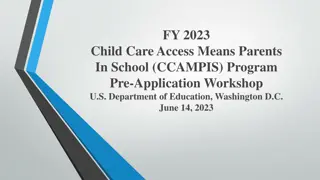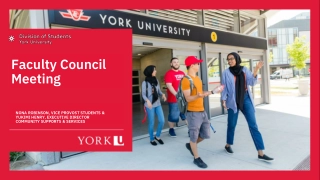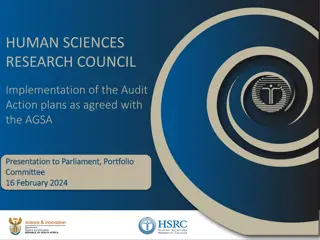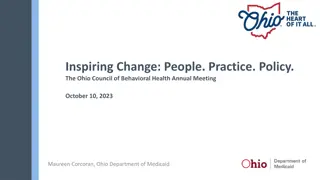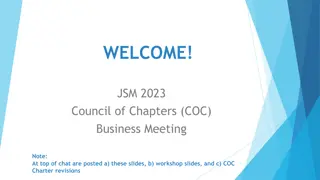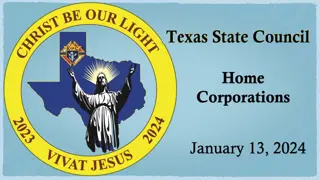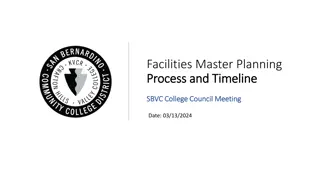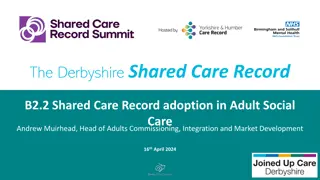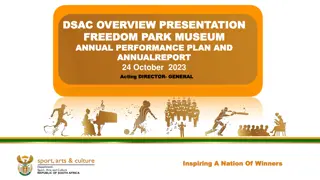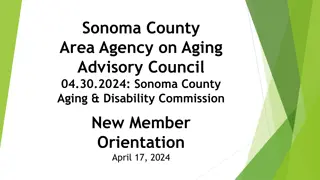Vatican Council. 1962-1965
The content provides insights into the Vatican II Council held from 1962 to 1965, dispelling common misunderstandings about its outcomes. It also delves into the historical context of Vatican I, including aspects like papal infallibility and key encyclicals issued by Popes Leo XIII, Pius X, and Benedict XV. The narrative offers a glimpse into the developments within the Catholic Church during these pivotal periods.
Download Presentation
Please find below an Image/Link to download the presentation.
The content on the website is provided AS IS for your information and personal use only. It may not be sold, licensed, or shared on other websites without obtaining consent from the author. Download presentation by click this link. If you encounter any issues during the download, it is possible that the publisher has removed the file from their server.
Presentation Transcript
Vatican II Council 1962-1965
MISUNDERSTANDINGS VATICAN II DID NOT: Eliminate Latin from liturgies Turn priest around to face the people Introduce contemporary/modern music Reduce/eliminate organ music and traditional hymns Remove altar rails Remove statues Move tabernacle No more rote memorization of Catechism (Baltimore Catechism) Spirit of Vatican II modernizing to what I think
Historical Context First Act of Vatican II Close Vatican I Pius IX (1846-1878) Convenes Vatican I: (1869-1870) July 1870: First Dogmatic Constitution on the Church of Christ Chapter 1: Institution of the apostolic primacy in Peter Chapter 2: Permancy of the primacy of Peter Chapter 3: On the power and character of Roman Pontiff Chapter 4: Infallibility of teaching authority of Roman Pontiff
Vatican I (Cont.) Papal Infallibility: when the Roman Pontiff speaks EX CATHEDRA. . . in the exercise of his office as shepherd and teacher of all Christians . . he defines a doctrine concerning faith or morals to be held by the whole Church . . . by the divine assistance promised to him in blessed Peter, that infallibility which the divine Redeemer willed his Church to enjoy in defining doctrine concerning faith or morals. Franco-Prussian War Bishops sent home
Pope Leo XIII (1878-1903) Supremi apostolatus oficio (1883): Rosary gives us victories in battle Rerum Novarum (1891): Capital and Labor o First Social Encyclical o Response to labor issues Industrial Revolution o Pastoral Sociology is a mission of the Church
Pius X (1903-1914) Pascendi Dominici Gregis (1907): o On Modernism Lowered Age of Communion to Age of Reason: o Desire for more participation in the liturgy Initiated First Code of Canon Law (Promulgated after death - Benedict XV) (Raymond of Penafort: Decretals of Gregory IX 1234) Reformed liturgy Forerunner of Vatican II
Benedict XV (1914-1921) Promulgates First Code of Canon Law Pius XI (1921-1939) Lateran Pact (1929) Dissolves Papal States Vatican City-State 109 acres
Piux XII (1939-1958) o Mystici Corporis Christi (1943): The Mystical Body of Christ (The Church) o DivinoAfflante Spiritu (1943): Sacred Scripture o Mediator Dei (1947): Mediator of God Sacred Liturgy o Humani Generis (1950): On human origin Man could of his own reason conclude there is a God o Ad Caeli Reginam (1954): Dogma of Assumption Note: Invoked infallibility
John XXIII (1958-1963) oCalls Ecumenical Council Vatican II oVatican II (1962-1965) oBreath of Fresh Air into Church Paul VI (1963 1978) oConcludes Vatican II Council (1965)
Documents of Vatican II (3 Declarations) Gravissimum Educationis (Declaration on Christian Education) Nostra Aetate (Declaration on the Relationship of the Church to Non-Christian Religions) Dignitatis Humanae (Declaration on Religious Freedom)
Documents of Vatican II (9 Decrees) o Ad Gentes (Decree on the Church s Missionary Activity) o Presbyterorum Ordinis (Decree on the Ministry and Life of the Priests) o ApostolicamActuositatem (Decree on the Apostolate of the Laity) o Optatam Totius (Decree on Priestly Training) o Perfectae Caritatis (Decree on the Adaptation and Renewal of Religious Life) o Christus Dominus (Decree Concerning the Pastoral Office of Bishops) o Unitatis Redintegratio (Decree on Ecumenism) o Orientalium Ecclesiarum (Decree on the Catholic Churches of the Eastern Rite) o Inter Mirifica (Decree on the Media of Social Communications)
Documents of Vatican II (4 Constitutions) Sacrosanctum Concilium (Constitution on the Sacred Liturgy) Lumen Gentium (Dogmatic Constitution on the Church) Dei Verbum (Dogmatic constitution on Divine Revelation) Gaudium et Spes (Pastoral Constitution on the Church in the Modern World)
Popes and Constitutions Sacrosanctum Concilium (Liturgy) Paul VI: Roman Missal Vernacular Adds three Eucharistic Prayers Re-introduces Prayers of the Faithful Re-writes Easter Triduum Rites
Popes and Constitutions Lumen Gentium (Church) John Paul II: Code of Canon Law (Some refer to as Final Vatican II Document ) Catechism of Catholic Church Strides towards Ecumenism Limited use of Latin Mass
Popes and Constitutions Dei Verbum (Sacred Scripture) Benedict XVI: Jesus of Nazareth Scripture Scholar Encyclicals on three Cardinal Virtues: Faith, Hope, Charity Summorum Pontificum
Popes and Constitutions Guadium et Spes (Church in the Modern World) Francis: Ecumenism Joy of the Gospel Amoris Letitiae Synod on Synodality Tradiciones Custodes
SACROSANCTUM CONCILIUM CONSTITUTION ON SACRED LITURGY DECEMBER 4, 1963 Three Themes (Participation in Liturgy) Conscious Active Fruitful
CONSTITUTION ON SACRED LITURGY Seven Chapters: o General Principles o Most Sacred Mystery o Other Sacraments o Divine Office o Liturgical Year o Sacred Music o Art and Sacred Furnishings
CONSTITUTION ON SACRED LITURGY General Principles By His power He is present in the sacraments, so that when a man baptizes it is really Christ Himself who baptizes (LG 7) In persona Christi . . . when the liturgy is celebrated, something more is required than the mere observation of the laws governing valid and licit celebration; it is their duty (pastors) also to ensure that the faithful take part fully aware of what they are doing, actively engaged in the rite, and enriched by its effects (SC 11) FULL * ACTIVE * FRUITFUL
CONSTITUTION ON SACRED LITURGY General Principles In sacred celebrations there is to be more reading from holy scripture, and it is to be more varied and suitable (SC 34). The sermon, moreover, should draw its content mainly from scriptural and liturgical sources, and its character should be that of a proclamation of God s wonderful works in the history of salvation, the mystery of Christ, ever made present and active within us, especially in the celebration of the liturgy (SC 34).
CONSTITUTION ON SACRED LITURGY General Principles Particular law remaining in force, the use of the Latin language is to be preserved in the Latin rites (SC 34). But since the use of the mother tongue, whether in the Mass, the administration of the sacraments, or other parts of the liturgy, frequently may be of great advantage to the people, the limits of its employment may be extended. This will apply in the first place to the readings and directives, and to some of the prayers and chants (SC 34).
CONSTITUTION ON SACRED LITURGY General Principles Provisions shall also be made, when revising the liturgical books, for legitimate variations and adaptations to different groups, regions, and peoples, especially in mission lands, provided that the substantial unity of the Roman rite is preserved (SC 38).
CONSTITUTION ON SACRED LITURGY Eucharist: The rite of the Mass is to be revised in such a way that . . . devout and active participation by the faithful may be more easily achieved. The rites are to be simplified . . . elements which, with the passage of time, came to be duplicated, or were added with but little advantage, are now to be discarded;
CONSTITUTION ON SACRED LITURGY Other Sacraments: The rite and formulas for the sacrament of penance are to be revised so that they more clearly express both the nature and effect of the sacrament. Extreme unction, which may also and more fittingly be called anointing of the sick, is not a sacrament for those only who are at the point of death. Hence, as soon as any one of the faithful begins to be in danger of death from sickness or old age, the fitting time for him to receive this sacrament has certainly already arrived (SC 72-73).
CONSTITUTION ON SACRED LITURGY Other Sacraments: o Both the ceremonies and texts of the ordination rites are to be revised. The address given by the bishop at the beginning of each ordination or consecration may be in the mother tongue (SC 76). o Matrimony is normally to be celebrated within the Mass, after the reading of the gospel and the homily, and before the prayer of the faithful. The prayer for the bride, duly amended to remind both spouses of their equal obligation to remain faithful to each other, may be said in the mother tongue (SC 77). .
CONSTITUTION ON SACRED LITURGY Liturgical Year: The liturgical year is to be revised so that the traditional customs and discipline of the sacred seasons shall be preserved or restored to suit the conditions of modern times; their specific character is to be retained, so that they duly nourish the piety of the faithful who celebrate the mysteries of Christian redemption, and above all the paschal mystery (SC 107).
CONSTITUTION ON SACRED LITURGY Sacred Music The Church acknowledges Gregorian chant as specially suited to the Roman liturgy: therefore, other things being equal, it should be given pride of place in liturgical services. But other kinds of sacred music, especially polyphony, are by no means excluded from liturgical celebrations (SC 116).
CONSTITUTION ON SACRED LITURGY Sacred Music The typical edition of the books of Gregorian chant is to be completed; and a more critical edition is to be prepared of those books already published since the restoration by St. Pius X (SC 117). It is desirable also that an edition be prepared containing simpler melodies, for use in small churches.
CONSTITUTION ON SACRED LITURGY Sacred Music In the Latin Church the pipe organ is to be held in high esteem, for it is the traditional musical instrument which adds a wonderful splendor to the Church s ceremonies . . . (SC 120). But other instruments also may be admitted for use in divine worship, with the knowledge and consent of the competent territorial authority . . . . This may be done, however, only on condition that the instruments are suitable, or can be made suitable, for sacred use . . . (SC 121)
CONSTITUTION ON SACRED LITURGY Sacred Music The texts intended to be sung must always be in conformity with Catholic doctrine; indeed they should be drawn chiefly from holy scripture and from liturgical sources (SC 121).
CONSTITUTION ON SACRED LITURGY Sacred Art and Sacred Furnishings: The practice of placing sacred images in churches so that they may be venerated by the faithful is to be maintained. Nevertheless, their number should be moderate, and their relative positions should reflect right order. For otherwise they may create confusion among the Christian people and foster devotion of doubtful orthodoxy (SC 125).


